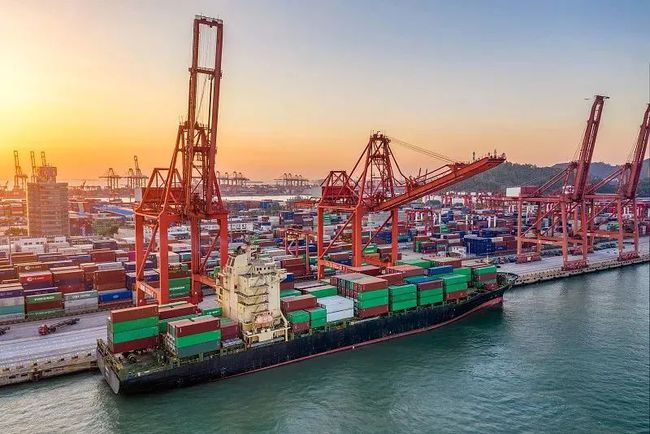As the foundation of automobile industry, auto parts are the necessary factors to support the sustainable and healthy development of automobile industry. In recent years, benefiting from the healthy and rapid development of the automobile industry, the development scale and speed of the automobile parts industry have been greatly improved. The national support policies for the development of the automobile industry will bring more opportunities for the automobile parts industry, and further accelerate the development of the automobile parts industry.
The auto parts industry is in the middle of the whole auto industry chain. The upstream industries are steel, rubber, plastics, electronic components etc., while the downstream industries are vehicle manufacturers and their parts suppliers. There are many industries involved in the upstream, especially steel and other industries, which occupy an important strategic position in the national economy. The development of autoparts industry can effectively promote the development of such industries. From its downstream, the auto parts industry is an important part, and also is the foundation. Without a strong component industry as the foundation, there will be no independent, complete and internationally competitive auto industry.
From the perspective of the upstream industry, the prices of raw materials in the parts industry are mainly determined by the market prices of steel, petroleum, natural rubber and other bulk commodities. In recent years, due to the impact of frequent fluctuations in the prices of iron ore, petroleum, natural rubber and other resource commodities, the prices of steel, rubber, plastics and other chemical materials have also fluctuated significantly, causing certain pressure on the stability of the production and operation of the domestic auto parts industry.
From the perspective of downstream industry, benefiting from the development of domestic and foreign vehicle industry and the expansion of consumer market, the domestic auto parts industry shows a good development trend. The downstream customers of domestic parts suppliers are mainly domestic and foreign vehicle manufacturers and their parts supporting suppliers, and the customer concentration is high, so the parts enterprises are in a relatively weak position in the negotiation with downstream customers. However, for some parts suppliers with leading advantages in a certain market segment, their market position and technical advantages will help to enhance their market voice and bargaining power, so they have the ability to transfer costs downstream.
The cost of auto parts manufacturing industry is subject to the upstream industry and its own management level, while the parts required by downstream auto manufacturers are mainly from fixed suppliers. The largest buyer of auto parts is auto parts dealers, which is also the main channel of auto parts sales. The profit margin depends on the industry status, competitive structure and bargaining power with downstream industries.
In the relatively mature international automobile market, 50%-60% of profits are generated in the service field. China has experienced tremendous economic development in the first ten years of the 21st century, and the automobile industry has benefited accordingly. Afterwards, a huge “automotive aftermarket” is entering a period of rapid growth, and the automotive parts industry has a bright future.
At the macro-economic level, China’s economic growth has slowed down in recent years, and the main economic indicators are still weak. In 2015, China’s GDP growth exceeded 7%, falling to the lowest 6.9% in more than a decade. Coupled with the strengthening of restrictive factors such as transportation, energy and environment, the macro environment of automobile and its parts industry is not optimistic. In the future, the macro economy will continue to be in the process of adjusting structure, improving efficiency and gradually adapting to the “new normal”. Under this background, the opportunities of the automotive industry as a whole will be less and less, and the probability of the industry to obtain the overall excess income opportunities is also decreasing. It is necessary to seek the innovation and development of the core technology of parts in order to explore new market opportunities.
Driven by the United States and other developed economies, the economic growth rate of emerging markets rebounded slightly. Although the improvement of international economic situation is conducive to the export of domestic automobile and its parts, there are also many uncertain factors such as the political instability of some countries in the Middle East and Eastern Europe, and the changes of market policies in Africa and South America, which will have a negative impact on China’s automobile and its parts export. While facing market competition, Chinese auto parts exporters also need to further improve product layout, improve product quality, establish a stable marketing system, build Chinese brands, and enhance market competitiveness.
Export Situation
Compared with 2009-2011, the global economy has been in low-speed growth since 2012, which also led to a significant decline in China’s auto parts exports after 2012. In 2012, the export amount of auto parts in China was 55.322 billion US dollars, an increase of 5.99% year-on-year; In 2013, the export amount of auto parts in China was 59.821 billion US dollars, an increase of 8.13% year-on-year; In 2014, the export amount of auto parts in China was US $64.617 billion, an increase of 8.02% year on year; In 2015, the export volume of auto parts decreased due to the global economic downturn. In 2015, the export amount of auto parts in China was US $61.9 billion, decrease 0.4% year on year.
According to the “Opinions on Promoting the Sustainable and Healthy Development of China’s Auto Products Export” issued by the Ministry of Commerce and other departments at the end of 2009, the average annual growth rate of China’s automobile and parts export will be about 20% by 2015; By 2020, China’s export volume of automobile and parts will account for 10% of the world’s total trade volume of automobile products. Therefore, in the long run, there is still a lot of room for growth in the export of automobiles and parts in China.
The Development Trend of Global Automobile and Parts Industry
At present, China, India and other emerging automobile markets have become the largest and most growing automobile consumer markets in the world. At the same time, these countries are rich in labor resources, low labor costs and constantly improving labor quality. With the increasingly fierce competition in the international automobile and parts industry, in order to explore new markets and effectively reduce production costs, automobile and parts enterprises began to accelerate the industrial transfer to China, India, Southeast Asia and other countries and regions.
In the context of global economic integration, facing the increasingly competitive market environment, the world’s major auto companies and parts suppliers focus on their own core business and advantage business, while further reduce the self-made rate of auto parts, and adopt the strategy of global procurement to purchase auto parts products with comparative advantages worldwide.
Global procurement of auto parts will become a trend, but for some time in the future, China will still focus on export and internationalization. At present, international buyers are increasingly rational and practical in purchasing from China, by selecting and cultivating potential core suppliers, increasing their own logistics integration; strengthening communication with foreign factories in China to increase the latter’s enthusiasm for exports. To promote the process of China’s procurement, they diversify the procurement destination, compare with other emerging markets and decide the procurement location. According to the analysis, although international buyers are increasingly cautious about China’s procurement, export and internationalization will still be the main theme of China’s local parts manufacturers in the next decade.
Post time: Jul-23-2021



